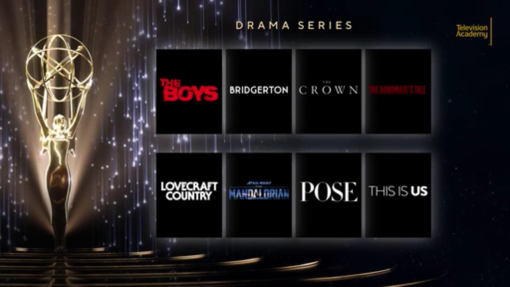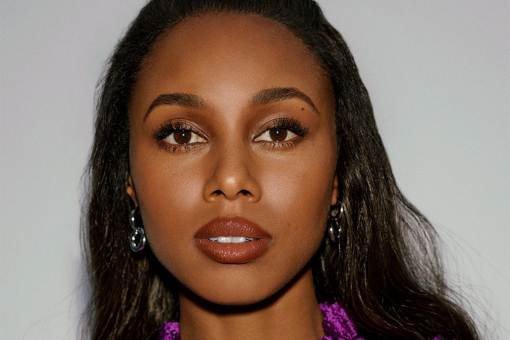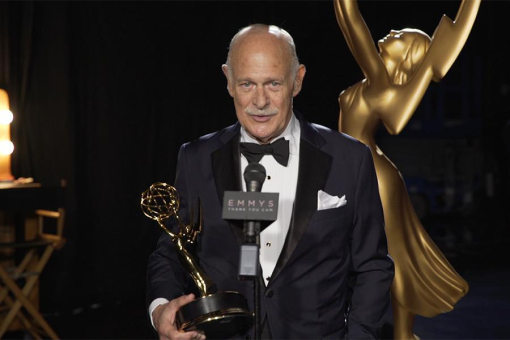It was perhaps the most talked-about turn of events of the current television season – how Jack Pearson, the beloved father on This Is Us played by Milo Ventimiglia, met his end.
And the telling was all in the capable hands of the show's cinematographer, Yasu Tanida.
The post-Super Bowl episode of the megahit time-shifting, multi-generational family drama scored an average of 27 million viewers, with a majority of them likely reaching for their tissue boxes as the story of Jack's demise unfolded.
Fans of the award-winning drama need not worry. The flawed yet practically perfect patriarch will live on through flashbacks, as he has through nearly two seasons.
Jack's character and those of the other "Big Five," series stars Mandy Moore, Sterling K. Brown, Chrissy Metz and Justin Hartley are all literally seen through Tanida's lens.
Tanida's career began at the turn of the 21st century. Born in Tokyo, he grew up in Orange County, Calif. and then attended Chapman University, where he studied film and television production. In 2001, while still a student, he won a Kodak Cinematography Award.
It was the first of a number of honors which also include the John Cassevetes Independent Spirit Award for August Evening (2007) and a SXSW Special Jury Prize for The Retrieval (2013). He also lensed 2014's Stretch for director Joe Carnahan.
While he may consider himself an "indie film guy," Tanida has had a prolific television career on programs including The Blacklist, State of Affairs, Criminal Minds, Legends, Those Who Kill, Pitch and The Long Road Home.
We caught up with him while This Is Us was on a break during the Winter Olympics.
The revelations of the "Slow Cooker" episode are just the latest example of your show's many emotional moments. How does the cinematography contribute to the storytelling on This Is Us?
I think the cinematography contributes by trying to fit right in line with the storytelling. The camera work is not meant to overpower the story, to draw attention to itself, or to know it's even there. It's 100% handheld and is an observer of what the Pearson family is going through each week.
The camera is very objective, and objectively telling the story. But the lighting of the show is most always a subjective interpretation of the story. Sometimes I watch the blocking rehearsal and feel like that scene should take place in an overcast day. Sometimes there's a streak of light coming in from the window. So I try to help the storytelling by expressing how I think I want a given scene to look and feel.
With This Is Us spanning multiple decades from the 1970s on, how do you create the distinct look for each era?
To be honest, there is no distinct look to each era from a cinematography standpoint. From the pilot, the idea was to not know which era we actually are in. The audience were hopefully surprised when the fireman took out the cigarette in the hospital.
I think that question is more a compliment to the art department, the costume, and make-up/hair departments. They are the ones who create the distinct look by making things period correct. Naturally there might be more earth tones in the 70's look and more primary colors in the present, but we shoot with the same lenses and lighting throughout every era.
How much research does it take to prepare?
At the beginning of the first season, I researched different ways to create the image and look of This Is Us. Technically, we settled on using Panavision Primo lenses that were detuned to a very high level in the back element of each lens. Detuning was in its testing phase two years ago, but Panavision changed the terminology by calling it "re-optimizing" now.
I think de-tune wasn't the best way to describe your lenses to a producer. Basically, we were the first TV series to frost the back of each Primo lens to a certain frosting degree with the help of Panavision Hollywood. What that does is soften the highlights and makes the blacks milky and grey.
In addition to the lenses, we apply a very heavily contrast-y LUT (look up table) in the camera to bring back the blown out flare-y highlights and put the blacks in the blacks again. That is the look of This Is Us in a nutshell.
Throughout the season, since I am shooting one episode, prepping the next one, color correcting the one that airs on Tuesday, I don't get the chance to research outside of what our general aesthetics are.
What is your process of working in conjunction with the production team? I imagine costume, production and art design plays a major role.
There is good open communication with each and every department. At the beginning, Gary Frutkoff (production designer) and I wanted to make sure every set we build feels lived in. The walls should look like a home that's been painted over and over. I stressed shiny surfaces, reflections, and any imperfections that can feel like a normal lived-in atmosphere. We discuss certain new sets that might be challenging and that's when Gary asks for my input.
I have an amazing camera, lighting and grip crew. Sean O'Shea and Richie Floyd are great focus pullers who can pull focus handheld on a 50mm macro lens. Very few first AC's would even try that, let alone a DP advise that. When you see that ultra close-up of Mandy Moore watching baby Tess for the first time or Sterling K. Brown crying in his office before his meltdown, that's the first ACs making sure it's in focus.
I have top of the line camera operators in James Takata and Beau Chaput. Don Bixby (gaffer) and Paul Perkins (key grip) are extremely fast and up for any type of lighting style I might do for any given series.
Hala Bahmet (costume designer) and Zoe Hay (make-up artist) are great at their craft and it's always a pleasure to photograph what they bring in front of the camera. We have make-up tests for new character looks and age changes during the course of the season.
Zoe lets me know how I can help her with prosthetics and wigs for new characters. Hala and her department always keep me in the discussion for big wardrobe days, special color tones they are thinking about - and they are always with us at video village.
What is your interplay like with the actors?
I have a great relationship with all the actors on This Is Us. We have a very light and fun atmosphere on set. Several of them are interested in directing, so they sometimes ask me how and why I decide on the lighting or my choice of lenses. All the actors are very open to any directions I might need to give them for blocking or for lighting purposes. Although that is very minimal on our show.
There are times when I touch base with the actors on what's in the frame and how tight the shot is on them. But, more often than not, it's almost an intuitive thing how that sort of information comes up. Maybe one of them will look at me a certain way and I already know what they are going to ask or are even thinking.
It's a non-verbal communication that they know where I'm placing the camera, and I know where they would like to move to in a scene. It's a level of trust that forms between a DP and actors after working together for two years in intense emotional scenes day after day.
Tell us about your working relationship with creator and showrunner Dan Fogelman, and how it all began.
I first met Dan when I was hired by director Paris Barclay for the Pitch Fox pilot shoot in February 2016. The premise of the pilot was the very first week of the very first female major league baseball player. I got along with Dan because we are both die-hard baseball fans and it was always a goal to shoot a baseball project. We both kept saying how cool it was to be shooting in San Diego's Petco Park.
Dan liked how the Pitch pilot turned out and wrote me an email about another show that he was going into production with in the fall of 2016 that was needing a DP. That show turned out to be This Is Us.
I watched the pilot episode and I thought this family ensemble looked like a cool challenge visually for me with all the different storylines and eras. I interviewed with John Requa and Glenn Ficarra and I was lucky enough to be hired to shoot the series.
The working relationship for the last two years has been great with Dan. His officer door is always open and he puts a lot of trust in me making the show visually consistent throughout the 35 episodes I've shot for This Is Us. He always is upfront with issues and changes he wants to make and my job is to accommodate him the best I can.
I color correct every episode down the street from our Paramount lot at Technicolor Hollywood with our colorist, Tom Forletta, and Dan trusts me visually with the final look of each episode. I take that responsibility seriously in making the show with the highest quality possible -and what Dan would like.
With part of the show shot on location, how do the specific locales influence your cinematography and how do you adapt the style that you've set on the stages?
Since we do shoot in different eras, there are specific things we can't see in the frame to give away 2018. Because of that, we use a lot of longer lenses where I can pick out exactly what the background will be for any given shot. If we need a wide shot, the widest we go is almost always 27mm to 50mm. The coverage is shot mostly in 50mm to 100mm range.
I think subconsciously what that did was give focus mainly to the performance. The audience doesn't need to see the pretty set design or the architecture of an interior. The frame hyper-focuses on the characters.
To keep the same feel to our studio locations, we approached the sets on the Paramount lot the same way. That makes the show feel how it feels. Ultimately the cinematography has to serve the story, dialogue, and characters. I keep that in mind every day of our shoot.
Tell us about your experience on National Geographic Chennel's The Long Road Home.
The Long Road Home was an amazing experience. It fit perfectly into my schedule between season one and two of This Is Us and was a show completely different from it as well.
Instead of the style of This Is Us, I got to incorporate crane shots, dolly shots, multiple cameras, and wider lenses (14.5mm-27mm). It was basically 80 days of action, stunts, explosions, gunfire, and huge set pieces. Phil Abraham and I have a great relationship where we always want to keep high energy on the set and tell the story from the soldier's perspectives.
I can't speak enough of Seth Reed, our production designer, who created a quarter mile of Iraq in the army base of Fort Hood, Texas. He gave me a quarter-mile sandbox to play in and recreate a true story based on real characters and real life events surrounding Black Sunday in 2004.
With the full cooperation of the US Army, we were allowed to film using Bradley tanks, Abrams tanks, LMTV trucks, Humvees, and Blackhawk helicopters. I am very proud of what we all accomplished in the summer of 2017 with the great local crew in Austin, Texas.
How did you first get into the business?
I grew up in Orange County and graduated from the film school at Chapman University in 2001. I received some awards for my student cinematography that got me some work. I also worked as an electrician on set, while shooting projects whenever I could find them. It was meeting new people, seeing different styles of lighting, and growing slowly from one project to another.
If there was one film that affected my early career the most, it was August Evening directed by Chris Eska. It won the LA Film Festival in 2007 and the John Cassevetes Independent Spirit Award. It got me on Variety's 10 Cinematographers to Watch List in 2008. I love indie film and my heart still has a soft spot when I get a script for a character drama.
How has your craft evolved over the decades?
It is still evolving. I think I'm slowly getting better and better at judging light and the quality of light just with my eyes. I'm always learning to become faster on a lighting setup so the energy of a set stays alive. I've become less and less dependent on material things that come with being a cinematographer.
In 2018 there are so many options for lenses, LED fixtures, cameras, wireless control, etc. I look at all the new information out there and I just pick and choose new gadgets depending on how useful they become. Does this really make me a better cinematographer? Or is it just about working with the newest gadget? I try to do a better job of answering those questions.
Of all the films and television shows you've worked on, what have been some of the most challenging scenes?
I think the most challenging scenes recently were the consecutive night shoots on The Long Road Home. It had been five years since I had done so much night work on a project.
On The Long Road Home we did something like six weeks of nights. This is with heavy action scenes and to choreograph the short summer night schedule was very challenging. We had one the best and nicest first AD in the business with KC Hodenfield so we made it a great experience.
The most challenging scenes with This Is Us has to do with schedule as well. We are on an eight days an episode schedule, and the challenge is keeping a high quality throughout the eight months of production.
Just one example would be in 'The Car' episode, directed by Ken Olin. We shot the funeral, reception, and the Dr. K reunion over two days. In order to get the best light possible for the outside scenes, we bounced from outside early in the day, to interior reception when the sun wasn't the best, back to outside for more pretty dusk sequences. That's an example of just two of our over 150 production days for season two!
What have been some of the most memorable?
It's hard to look at This Is Us in hindsight because at the current moment we are trying to finish episode 218, the season finale. Friends mention they enjoyed the Super Bowl episode and I hope that will be memorable.
I can say the pilot for The Blacklist has been memorable because it has been five years since we shot that. I'm very proud to see the series make it to 100 episodes. I can say shooting August Evening and The Retrieval with Chris Eska has been memorable. Stretch with Joe Carnahan was a blast to shoot and was very memorable.















